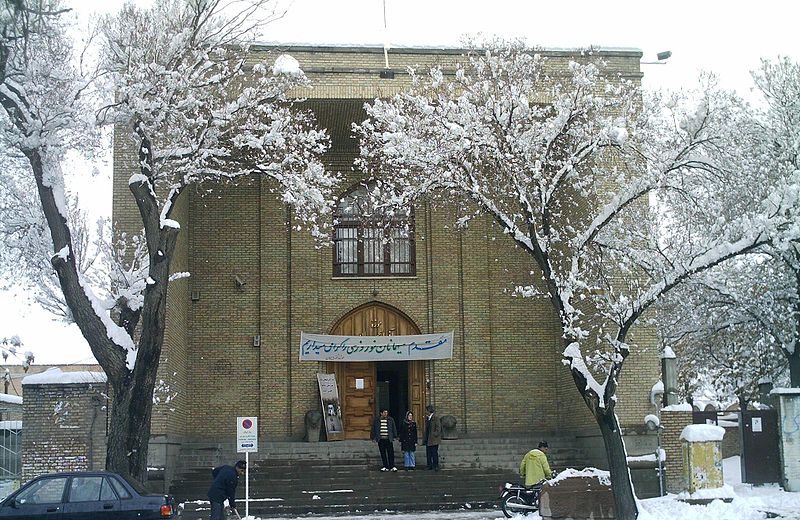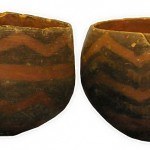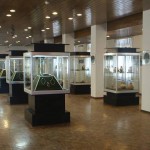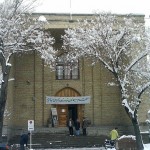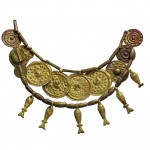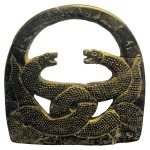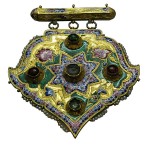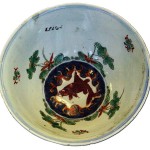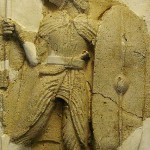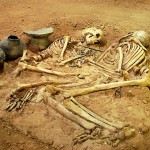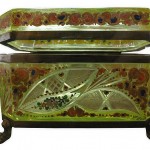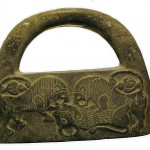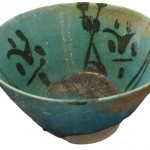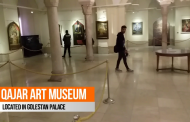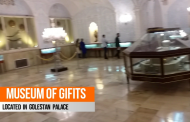Azerbaijan Museum is the major archaeological and historical museum in Tabriz, in the northwest part of Iran (East Azerbaijan province). It was established on April 1958. The museum consists of three major halls, a side yard, office rooms and a library. It mostly contains objects discovered from excavations in Iranian Azerbaijan, also some artworks and sculptures of artists. Its library contains more than 2500 books, both handwritten and printed, about history, archaeology, art and Iranian culture. Apart from National Museum of Iran in Tehran, Azerbaijan Museum has the largest collection belonging to different periods of Iran’s history.
The museum has three galleries. The first gallery bears the oldest remains from 5th millennium BC until Sassanian dynasty (212-656 AD). The museum’s monuments include goddesses, Rhytons, two skeletons (male and female) and a carved slab of marble known as Bism Allah-Stone.
The second gallery consists of two parts: one for Islamic archeology and another part for coins and seals. Part one involves pottery dated from the 10th to the 19th centuries. The coins of this gallery (part two), began with the Achamenid dynasty and end in the Qajar dynasty. The displayed seals and stamps date from the third millennium BC to Islamic eras.

In second gallery, it shows a Sassanian agate stamp seal with sun and moon image and Pahlavic inscriptions.
The third gallery includes some sculptures made by Ahad Hosseini. They are made of plaster and represent the sculptor’s own image about the fate of mankind in the 20th century.
In the yard of museum some stone figurines, statues, rams and inscriptions are kept.
On May 7, 2013, five silver plate belonging to the Sasanid time stolen from Azerbaijan museum. On November 2013, East Azerbaijan police arrested the thieves but they couldn’t retrieve the stolen items.
Azerbaijan Museum is located next to Khaqani Park and Tabriz Blue mosque in central part of Tabriz.
- Pottery, Esmail Abad 5th millennium BC.
- 1st floor of the museum.
- Entrance Iwan of the Museum.
- Jewelry belongs to 1st millennium BC.
- Rock weight, Jiroft, 3rd millennium BC.
- Qajar era jewel (19th century).
- Safavid era chinaware (16th-18th centuries).
- Stucco, Parthian dynasty, Zahhak castle, Hashtrud.
- Iron Age’s remains
- Sassanid era silver plate with golden cover.
- Jewel box, qajar era (19th century).
- Jewelery belongs to 1st millennium BC.
- Sassanid Glass.
- Rock weight, Jiroft, 3rd millennium BC.
- Ceramic, Gorgan 13th century.
